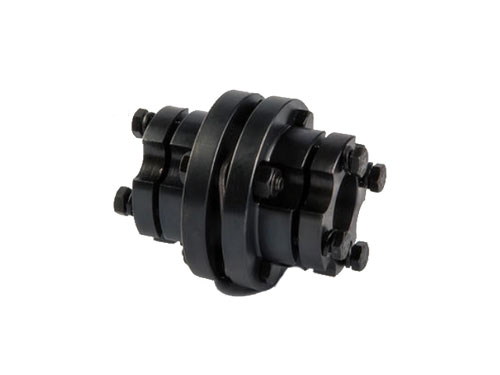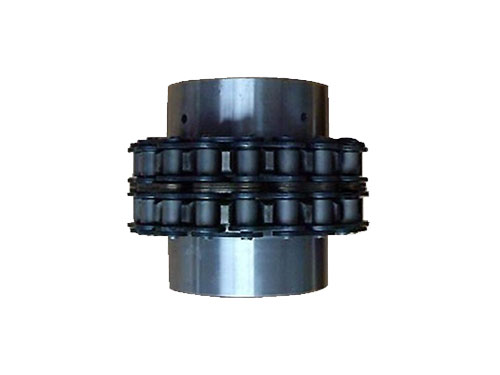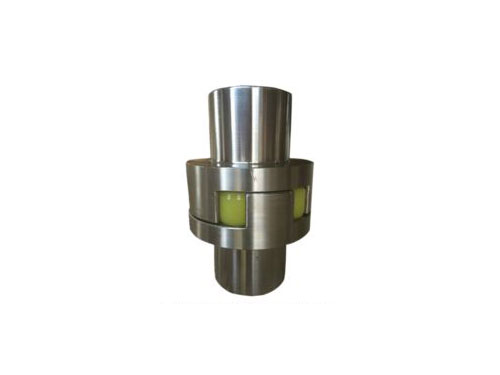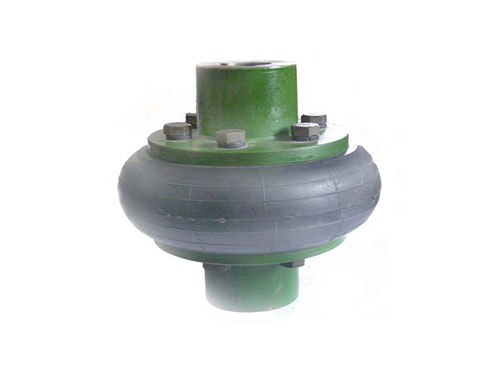 DJM expansion sleeve diaphragm couplingDJM expansion sleeve diaphragm coupling strength JZMJ type...
DJM expansion sleeve diaphragm couplingDJM expansion sleeve diaphragm coupling strength JZMJ type... GLF roller chain couplingGLF roller chain coupling is suitable for hydraulic machinery...
GLF roller chain couplingGLF roller chain coupling is suitable for hydraulic machinery... Slider couplingSlider couplings are often used in general...
Slider couplingSlider couplings are often used in general... ML plum-shaped elastic couplingML plum-shaped elastic coupling and other coupling...
ML plum-shaped elastic couplingML plum-shaped elastic coupling and other coupling... UL tire couplingUL tire coupling is a highly elastic coupling...
UL tire couplingUL tire coupling is a highly elastic coupling...What types of common pump couplings include?What is the structure?
Diaphragm coupling (referred to as "diaphragm coupling") is a transmission device that uses metal flexible components to transmit torque without lubrication. It is widely used in ships, aviation, petrochemicals, machinery manufacturing and other fields .The flexible element is a diaphragm group composed of a number of thin metal diaphragms of 0.2mm~0.6mm.When working, the torque is input from the active flange, and the torque is transmitted to the metal diaphragm through the active torsion bolts arranged at intervals along the circumference, and then the diaphragm is transmitted to the driven flange through the driven bolts for output.It realizes the flexible transmission of the coupling through the elastic deformation of the alloy diaphragm group, and uses the flexibility of the diaphragm to absorb the relative displacement between the input and output shafts, thereby compensating for the residual errors caused by various factors in the connecting parts of the transmission shaft system. in.
Due to the complexity of the temperature field, it is very difficult to accurately calculate the thermal rise value of a machine from a cold state to a hot state.Of course, the diaphragm coupling has a relatively large axial compensation capability, and it only needs to be estimated.In the estimation, the position of the thrust bearing of the rotor and the position of the dead center of the casing should be considered, the expansion direction of the rotor and the casing and the influence of the casing expansion on the position of the rotor should be determined, and then the expansion of the rotor and the casing should be calculated separately according to the linear expansion coefficient of the material. The amount of change in the position of the shaft head caused by the thermal expansion of the machine can be obtained by superimposing it.The selected coupling should be able to adapt to the 1100 continuous speed of the unit. The working speed of the unit is different, and the material selection, structural design, machining accuracy, dynamic balance accuracy and other requirements of the coupling are different.Under normal circumstances, coupling manufacturers have different series to meet the needs of different speed ranges.Therefore, when selecting the type of diaphragm coupling, check whether the allowable speed of the type can meet the requirements of the unit.
Due to the many advantages of diaphragm couplings, it has become a requirement for process power equipment, especially large petrochemical process pumps, boiler feed water pumps, blowers, compressor units, etc.In terms of processing technology, fine blanking, laser cutting, and various processing centers have been applied to the production of diaphragm coupling parts, and there is no big difference between the processing accuracy and surface condition of the parts and the product.In short, the design performance and processing level of domestic diaphragm couplings are comparable to those of enterprises, and various grades of high-performance diaphragm couplings can be designed and manufactured up to the standard.However, domestic users often have concerns about choosing domestic diaphragm couplings, especially large turbo-compressor units.
They are mainly worried about the following three aspects:
Worry about the failure of the design and manufacture of domestic diaphragm couplings.
Worried that domestic materials will not pass the test.
Worry about the lack of application performance of domestic diaphragm couplings.
Pump couplings are common couplings. There are three types: claw-type elastic coupling, elastic pin coupling and diaphragm coupling.Accurate centering requirements for installation, easing impact, changing the natural vibration frequency of the shafting, and avoiding hazardous vibrations, etc.There are also customers who do not know which coupling to choose which is more suitable for their own working conditions. Regarding the question of how to choose pump couplings, we generally recommend that users choose pump couplings to follow three principles.
What types of common pump couplings include?What is the structure?
(1) The elastic sleeve pin coupling is to put a rubber ring on the pin in a group, and then fix it on the flange hole of the two halves of the coupling with a screw cap. The rubber ring has elasticity and compensates for axis displacement. have experience.This coupling is suitable for medium-sized pumps.It is a non-metal elastic element coupling with simple structure, no lubrication, convenient installation, easy replacement, and does not require high centering accuracy. It is often used in pumps with lower power.There are many domestic manufacturers.
(2) The structure of the three-jaw coupling for the pump is to place the counter-wheel pad of the plum blossom hexagonal pump between the half couplings with three claws, which is roughly similar to the office principle of the plum blossom coupling. A pressure-increasing variant is applied to the wheel pads to transmit torque.This coupling is suitable for small-scale pumps.The claw-type elastic coupling is also called the elastic block coupling. It is characterized by small size, light weight, simple structure and convenient installation. It is often used in small power and unimportant occasions.
(3) The elastic pin coupling is to fill the nylon rod into the flange holes of the two halves of the coupling, and then use the baffle to fix the nylon rod on the two halves of the coupling. Transfer torque.This kind of coupling is relatively suitable for large-scale use.The pin is connected to the flanges of the two halves of the coupling. One end of the pin is fixedly fitted with the conical surface and the taper pin hole of the nut and the flange of the half coupling. The other end is equipped with an elastic sleeve, which is installed in In the pin hole of the other half of the coupling flange.